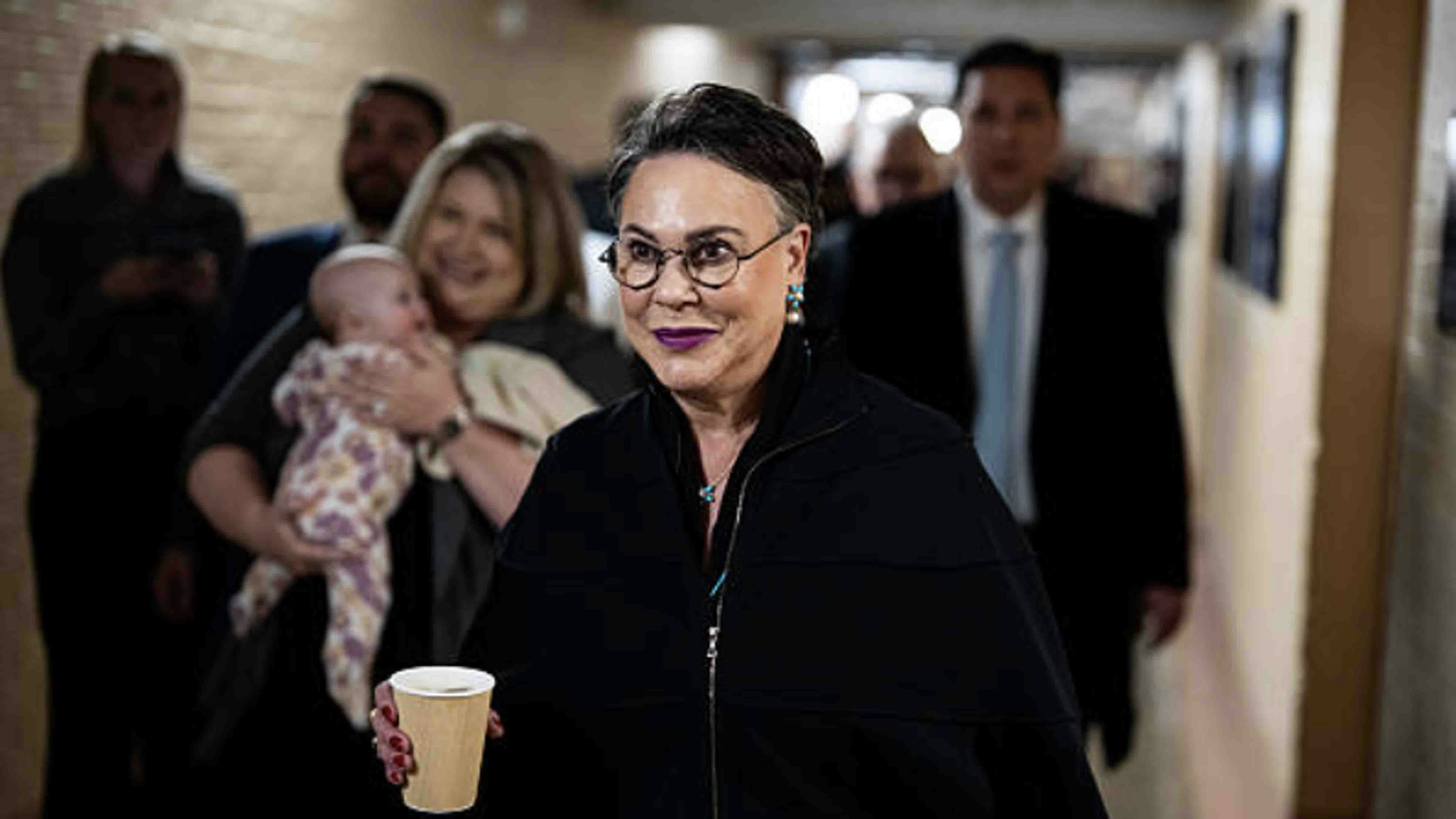There are few issues that have drawn more debate in Wyoming of late than property taxes. People have packed meeting rooms to harangue their state legislators about rapidly rising bills, some throwing combative accusations and others making tearful pleas.
But when you get past the noise and cut to the heart of the issue, Wyoming’s property tax debate centers on a couple of core issues: the merits of making property tax increases more consistent and whether the entire residential taxation system needs to be tweaked — or remade.
The rhetoric about property taxes has reached a fevered pitch with some legislators like Rep. Bill Allemand, R-Midwest, referring to making people pay them as “raping” residents.
“We’re trying to deal with these massive increases, what these massive spikes in property values are doing,” said state Rep. Steve Harshman, R-Casper. “When it’s double digit, three, four years in a row, hey, something’s got to change.”
How Bad Is It?
Over this year’s interim session, the state Revenue Committee considered more than 10 bills that aim to provide property tax relief.
Wyoming’s property taxes are assessed at 9.5% of the fair market value of a home. The Cowboy State ranks 47th in the U.S. for residential property tax rates.
Still, people like former Johnson County Assessor Cindy Barlow have demanded legislators to provide property tax relief, giving countless examples of people being priced out of their homes.
“There’s a lot of noise from both of the sides and there shouldn’t be a side on this,” she said. “We’re all in this together and it should be a collective conversation amongst many.”
Although property tax increases weren’t universal across the state, 15 of the state’s 23 counties saw more than double-digit percentage increases. For someone on a fixed income, that can be tough to handle.
The biggest reason behind this unprecedented growth and difficulty in making economic forecasts was the COVID-19 pandemic, which caused huge supply chain issues and a mass migration of people from cities to more rural areas like Wyoming. Many of these transplants came in with a relatively high buying power as they often came from more expensive areas.
“Let’s hope, we’re not going to have a regular set of pandemics or similar sorts of shocks to the economy happening on a regular basis,” said University of Wyoming professor of economics Robert Godby. “While property taxes went up and they went up a lot, that is a rare occurrence.”
These short-term trends are not consistent with traditional property tax growth cycles in Wyoming, which have historically ranged around 3% to 3.5% per year. Godby said it’s important for legislators to remember this history.
Is It Broken?
Barlow believes Wyoming’s taxation system is inherently broken, citing the roughly 3,000 people per year who have tax liens put on their homes.
“If you look at the percentage of increases, it’s unsustainable,” she said. “As a mom first and a grandmother second and living in Wyoming all my life, this is not sustainable to the people of Wyoming.”
Godby wants people to consider that Wyoming has some of the lowest tax rates in the nation, and that wages in the state also have increased along with inflation. He believes a larger conversation needs to happen to address declining revenues in Wyoming and who will pay to make up the difference.
The revenue from property taxes goes to local city and county governments and toward K-12 school funding. Harshman said the system works, but it doesn’t properly anticipate years of unexpected spikes in tax increases. Although property value appreciation usually exceeds property tax rates, Harshman said a homeowner won’t stand to benefit from this until selling a home.
Historic Increases, But Will They Last?
The year-to-year property tax increases seen over the last few years in Wyoming are unprecedented, in some instances exceeding 40% growth on some properties in one year.
State Rep. John Bear, R-Gillette, wants to create a new tax structure in Wyoming that allows business to flourish and attracts new industry to the state.
He also believes the revenue windfall that has resulted from increased property taxes in recent years is not being discussed as such. Bear said if the government gets an increase in revenue, essential services should increase or that money should be returned to the taxpayers. The route that the Legislature has generally taken is to put that money in savings.
“I think the people of Wyoming would prefer to have that money in their own savings account right now,” Bear said.
Rep. Liz Storer, D-Jackson, and Godby said there were some silver linings to this windfall, such as smaller counties providing benefits to their employees for the first time and increased funding for schools.
Tough Forecasting
Godby also is a member of the Wyoming Consensus Revenue Estimating Group (CREG), an organization charged with creating financial forecasts for the state. Although he said CREG has historically been accurate with forecasting property tax growth, he admitted that over the last few years, it’s missed the mark.
CREG projected a 9% growth of nonmineral properties for 2022, but that number ended up being 14.7%. CREG forecasted a 4.5% increase for 2021, but it came in at 17.1%.
In tax year 2023, residential property taxes alone increased by 20.3%. Property taxes as a whole have increased by 80% over the last six years.
CREG’s forecasts have been even farther off for total assessed valuations during the post-pandemic era. In 2022, they predicted property values at 46% below their actual $34 billion value for the next year, a difference of nearly $11 billion.
For 2024, CREG is projecting a more modest 5% rate of growth on nonmineral properties, which it expects to eventually decline back to the historical average of 3% per year.
Based on national and local trends showing a decline in new construction costs and home demand, Godby said he feels confident property tax rates will return to normal in the very near future. A similar flattening happened after a period of rapid growth that led to the financial crash of 2008.
Similarly, Godby said mortgage rates will probably remain higher than what people have been used to over the last 10-15 years, which will also suppress some demand.
Tax Caps
One bill gaining traction and support is a proposal that would implement a cap on all property tax increases year-to-year by no more than the rate of inflation determined by the the consumer price index (CPI), or 5%, whichever is lower.
Barlow said she wants to see an even more aggressive 3% cap with CPI or growth in gross personal income, or for the Legislature to change the definition of fair market value to purchase price.
Harshman said he expects some form of tax cap to pass in the 2024 legislative session, a measure about half of U.S. states have some form of.
“It’s got to pass. Who would vote against that?” Harshman questioned. “I think there will be broad support.”
Acquisition Value
One bill that was narrowly rejected by the Revenue Committee in November would have implemented acquisition value-based taxation in Wyoming, creating a taxation structure based on the purchase price of one’s home that would theoretically create a predictable fee schedule for the long-term future. California is the only state that has this.
“It isn’t the panacea, or half the states would be doing it,” Harshman said.
In 2023, the legislature approved $48,000 for a third-party study of what it would look like for Wyoming to adopt an acquisition valued-based method of residential taxation. This study was criticized by many like Barlow as being wholly inadequate for lacking key figures of cost analysis and not listing any benefits of adopting the taxation structure.
The bill would have required public reporting of the price a home is sold for, a piece of information that is now private. It also could create inequities of taxation between people in the same neighborhood based on when they bought their home.
The Legislative Service Office projected it would have caused a $153 million fiscal decrease in 2025, which would annually decrease to an $88 million reduction of revenue by 2028. Barlow questions these figures as she said they fail to assess the increasing value of the property tax pool as new homes are built and the increase in total value of this pool on existing homes that are sold each year.
Fair And Uniform
The Wyoming Constitution states that all property taxes in the state must be assessed in a way that is equal and uniform, provides for uniformly valued properties and represents just valuations. In other words, if two residential properties have the same fair market value, they are to be assessed and taxed the same.
Storer and Cheyenne Republican Sen. Stephan Pappas said they wouldn’t be able to get behind the 5% cap or acquisition value bills as they believe they could lead to unconstitutional inequities in the taxation system.
A corresponding constitutional amendment for the 5% cap bill has also been forwarded.
Another bill would establish a homeowner property tax exemption for 25.6% of the fair market value of a home, up to $200,000, and another piece of legislation would establish a 50% exemption for people who are age 65 and older and have lived in Wyoming for at least 30 years. Both bills would impact the state’s revenue on some level and provide no answers for replacing the lost revenue.
Why Not A Rebate Program?
The lowest hanging fruit of all these efforts would likely be to expand the state’s property tax refund program, a fund Gov. Mark Gordon has recommended $20 million for in the next budget cycle.
Bear said he supports this program, but believes it does nothing to address the increase in revenue the state has received over the last few years.
“If we’re receiving more money that needs to go back to the taxpayers,” Bear said.
The Wyoming Property Tax Refund Program is income-based, limited to homeowners who make no more than 125% of the median household income of their county or the state and have lived in the state for at least five years. This program requires people to apply for it and they provide financial documents to the state.
Bear explained that programs like these only temporary relief based on market conditions and only target people of certain income levels. He believes people should be taxed at the same rate no matter how much income they make or wealth they possess.
This perspective aligns with former President Ronald Reagan’s theory of trickle down economics, which asserts that providing tax breaks to the upper end of the economic spectrum will eventually reach those less fortunate.
“When money is freed up for both consumers and investors to put back into the economy, the economy flourishes,” Bear said. “When you do it where it’s what people are actually earning and they keep the money that they’re earning, it’s a much more robust effect on the economy.”
House Speaker Albert Sommers, R-Pinedale, has offered a different perspective in the past, saying he has no interest in giving tax breaks to millionaires.
The 2024 legislative session will end about a month before people reach their tax assessments in April. The timing of this and the 2024 elections may give legislators some extra motivation to address property tax relief.
Leo Wolfson can be reached at leo@cowboystatedaily.com.





